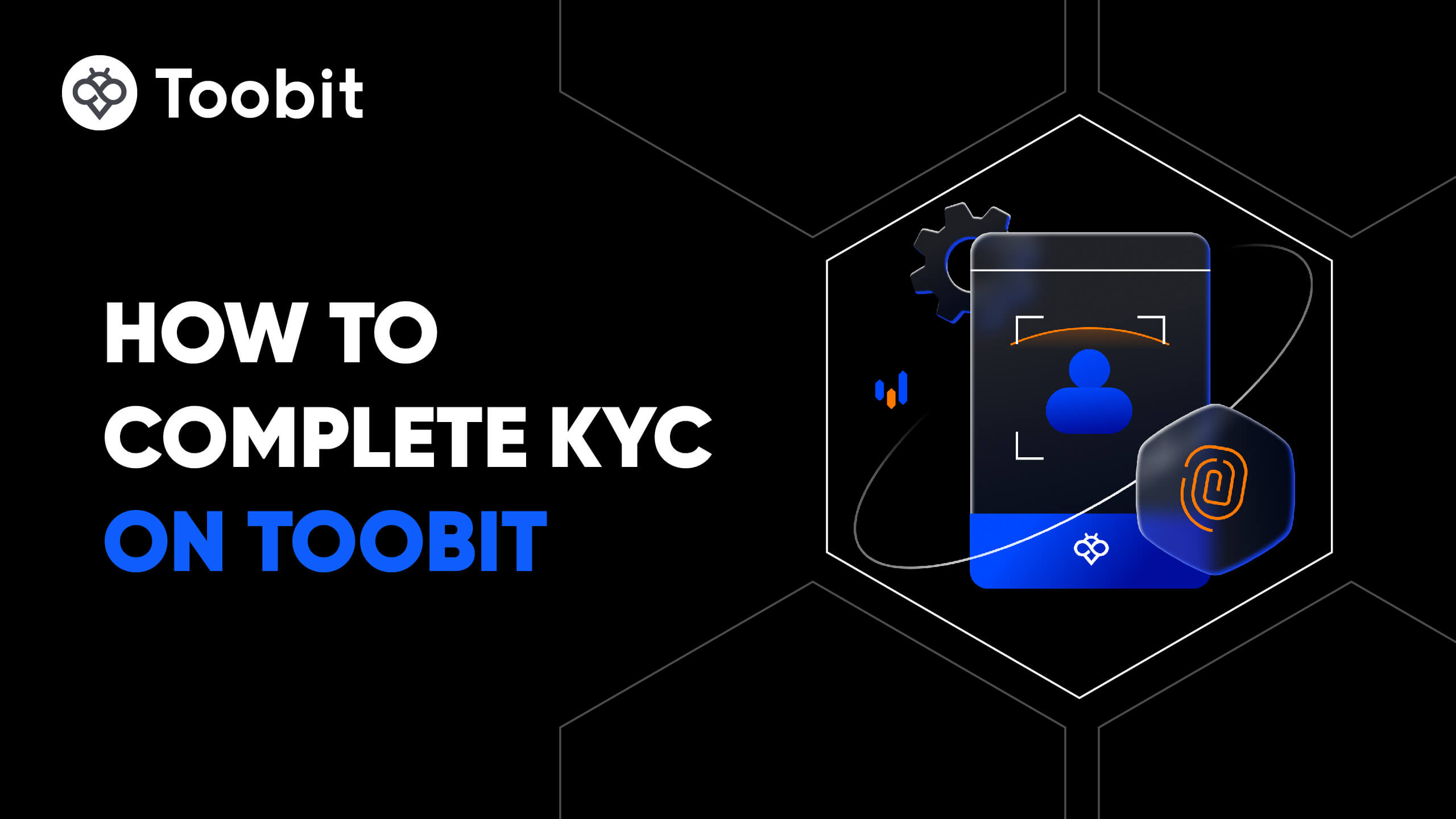Precio de Litecoin
LTCInformación del mercado de Litecoin
Precio en tiempo real de Litecoin hoy en USD
¿Cuánto vale 1 LTC en ?
Sobre Litecoin(LTC)
Historial de precios de Litecoin
¿Por qué el precio de Litecoin fluctúa constantemente?
¿Qué factores afectan el rendimiento de los precios de Litecoin?
Precios globales de Litecoin
Cómo comprar Litecoin
¡Únete a Toobit ahora!
Regístrate en Toobit con tu dirección de correo electrónico/número de teléfono móvil y país de residencia, y crea una contraseña segura para proteger tu cuenta.
Verifica tu identidad
Completa la verificación de identidad proporcionando tus datos personales y una identificación con foto válida.
Agrega un método de pago y compra Litecoin (LTC)
Agrega una tarjeta de crédito/débito o una cuenta bancaria después de verificar tu cuenta de Toobit. Utiliza múltiples opciones de pago para comprar Litecoin en Toobit.
Opera futuros perpetuos de LTC
Después de registrarte en Toobit y comprar USDT o tokens LTC, puedes comenzar a hacer trading de derivados, incluidos Futuros LTC y trading con margen para aumentar tus ingresos.
Únete a Copiar de LTC con traders líderes
Después de registrarte en Toobit y comprar con éxito USDT o tokens LTC, también puedes comenzar el comercio de copias siguiendo a los Traders Líderes.
¿Dónde puedo comprar Litecoin?
Compra criptomonedas en la app de Toobit
Regístrate en minutos para comprar criptomonedas con tarjeta de crédito o transferencia bancaria.
Opera en Toobit
Deposita tus criptomonedas en Toobit y disfruta de alta liquidez y bajas comisiones de trading.
Sección de video — verificación rápida, operaciones rápidas

Cómo completar la verificación en Toobit y protegerte contra el fraude
- 1.Inicia sesión en tu cuenta de Toobit.
- 2.Si eres nuevo en Toobit, mira nuestro tutorial sobre cómo crear una cuenta.
- 3.Haz clic en el ícono de perfil en la esquina superior derecha de la barra de navegación y luego pulsa en la página de Identificación.
Preguntas Frecuentes sobre LTC
¿Cómo funciona LTC?
Litecoin opera como una red de pago global descentralizada y de código abierto que permite transacciones rápidas y de bajo costo sin intermediarios. Utiliza tecnología blockchain para asegurar, verificar y registrar todas las transacciones a través de su red.¿Cuál es la misión principal de LTC?
La misión principal de Litecoin es proporcionar un sistema de efectivo electrónico entre pares rápido, seguro y de bajo costo para pagos globales, haciéndolo altamente adecuado para transacciones cotidianas.¿Quién es el fundador de Litecoin (LTC)?
Charlie Lee, un ex empleado de Google, lanzó Litecoin en 2011. Lee modificó el código fuente de Bitcoin para mejorar la capacidad de la blockchain para funcionar como una red segura.¿Cuáles son los posibles casos de uso de Litecoin?
Litecoin busca lograr una adopción generalizada por parte de comerciantes, con más de 2,000 tiendas y comerciantes aceptando LTC en todo el mundo a partir de enero de 2021. Diseñado para ser rápido y asequible, Litecoin es particularmente atractivo en regiones donde las tarifas de transacción representan un desafío, lo que potencialmente lo hace más práctico que Bitcoin para el uso diario.En 2020, Litecoin lanzó la testnet MimbleWimble para explorar transacciones confidenciales, implementando oficialmente la función en el bloque 225,920. Esta actualización mejoró la privacidad y fungibilidad, permitiendo a los usuarios realizar transacciones con mayor confidencialidad.¿Cuál es la historia de Litecoin?
Litecoin (LTC) fue creado por Charlie Lee, un ex ingeniero de Google, el 7 de octubre de 2011, y se lanzó como un proyecto de código abierto poco después. Fue desarrollado como una versión “más ligera” de Bitcoin, diseñada para abordar las limitaciones de escalabilidad y velocidad mientras mantenía los principios fundamentales de Bitcoin.Basado en el código de Bitcoin, Litecoin introdujo varias mejoras clave:- Un tiempo de bloque más corto de 2.5 minutos frente a los 10 minutos de Bitcoin, permitiendo confirmaciones más rápidas.- Un suministro total de 84 millones de monedas, cuatro veces el límite de 21 millones de Bitcoin.- El algoritmo de hashing Scrypt, diseñado para hacer la minería más accesible y descentralizada.Litecoin ganó tracción rápidamente y, para 2013, alcanzó una capitalización de mercado de $1 mil millones, ganándose el apodo de "plata frente al oro de Bitcoin".En 2017, Litecoin adoptó Segregated Witness (SegWit) para mejorar la escalabilidad y reducir las tarifas y luego realizó una transacción exitosa en Lightning Network, demostrando su capacidad para pagos instantáneos entre cadenas.En 2022, Litecoin integró la actualización de MimbleWimble Extension Blocks (MWEB), mejorando aún más la privacidad y escalabilidad. A pesar de la creciente competencia, Litecoin sigue siendo una de las criptomonedas más antiguas y confiables, ampliamente utilizada para pagos y como banco de pruebas para nuevas innovaciones blockchain.¿Cuál es la diferencia entre Litecoin y Bitcoin?
Litecoin (LTC) y Bitcoin (BTC) comparten un diseño descentralizado y utilizan Prueba de Trabajo (PoW) para la seguridad de la red, pero difieren en propósito, velocidad y escalabilidad.Litecoin fue creado como una alternativa más rápida y eficiente a Bitcoin. Genera un bloque cada 2.5 minutos en comparación con los 10 minutos de Bitcoin, resultando en confirmaciones de transacciones más rápidas y tarifas más bajas, ideal para pagos pequeños o frecuentes.Mientras que el suministro de Bitcoin está limitado a 21 millones de monedas, el de Litecoin es de 84 millones, haciéndolo más disponible pero ligeramente menos escaso. Los dos también utilizan diferentes algoritmos de hashing: Bitcoin usa SHA-256, mientras que Litecoin emplea Scrypt, que es menos intensivo en recursos y inicialmente hizo la minería más accesible.En esencia, Litecoin se enfoca en la usabilidad y velocidad, mientras que Bitcoin sirve como un almacén de valor a largo plazo. Muchos ven a Litecoin como un activo complementario: una “plata” transaccional frente al “oro digital” de Bitcoin.¿Cuál es el mecanismo de consenso de Litecoin y su proceso de minería?
Litecoin utiliza un mecanismo de consenso de Prueba de Trabajo (PoW), similar a Bitcoin, pero implementa el algoritmo Scrypt en lugar de SHA-256 para hacer la minería más accesible y eficiente en términos de energía.Los mineros validan transacciones y las agregan a nuevos bloques, ganando recompensas en LTC. La recompensa inicial por bloque fue de 50 LTC y se reduce a la mitad aproximadamente cada cuatro años a través de eventos de reducción a la mitad. Con un tiempo de bloque de 2.5 minutos, Litecoin procesa transacciones más rápido, aunque esta velocidad puede resultar en una tasa ligeramente más alta de bloques huérfanos.Para mejorar la escalabilidad y reducir los bloques huérfanos, Litecoin ha implementado Segregated Witness (SegWit), que optimiza el espacio de bloque y mejora el rendimiento de las transacciones.¿Cómo se asegura la red de Litecoin?
Litecoin se asegura a través de un mecanismo de consenso de Prueba de Trabajo (PoW) utilizando el algoritmo Scrypt, que es más intensivo en memoria y menos dependiente de la potencia computacional bruta que el SHA-256 de Bitcoin. Este diseño inicialmente fomentó una participación más amplia en la minería, promoviendo la descentralización.Con el tiempo, han surgido ASICs basados en Scrypt, mejorando la eficiencia mientras mantienen una fuerte seguridad de la red. La red global de nodos de Litecoin asegura resistencia a ataques como el doble gasto y los exploits del 51%.Las actualizaciones continuas del protocolo y una comunidad de desarrolladores dedicada fortalecen aún más su resistencia. Notablemente, la integración de MimbleWimble Extension Blocks (MWEB) en 2022 mejoró la privacidad y escalabilidad, consolidando la posición de Litecoin como una de las criptomonedas más seguras y confiables.¿Qué factores suelen influir en el precio de Litecoin (LTC)?
El precio de Litecoin está influenciado por una mezcla de dinámicas de mercado, adopción, factores macroeconómicos y desarrollos de la red.Los impulsores clave incluyen:- Oferta y demanda: El límite fijo de 84 millones de monedas de Litecoin lo hace deflacionario, con eventos de reducción a la mitad que reducen la nueva oferta y a menudo impulsan la demanda. - Adopción: El aumento del uso en pagos de comerciantes y sistemas de pago fortalece su utilidad y soporte de precios. - Sentimiento del mercado: Como la “plata frente al oro de Bitcoin”, LTC a menudo sigue las tendencias del mercado cripto más amplio. - Condiciones macroeconómicas: La inflación, las tasas de interés y la inestabilidad financiera pueden aumentar el interés de los inversores en activos cripto como Litecoin. - Desarrollos regulatorios y tecnológicos: Las regulaciones favorables y las actualizaciones de la red mejoran la confianza de los inversores, mientras que la estancación o los problemas de seguridad pueden frenar el crecimiento.En resumen, el valor de Litecoin refleja tanto sus fundamentos tecnológicos como las condiciones del mercado global.¿Cómo juega el evento de reducción a la mitad un papel en el precio de Litecoin?
Los eventos de reducción a la mitad de Litecoin, que ocurren aproximadamente cada cuatro años, reducen a la mitad las recompensas por bloque para los mineros, reduciendo la tasa a la que nuevas monedas entran en circulación. Este choque de oferta a menudo aumenta la escasez, atrayendo a inversores que anticipan precios futuros más altos.Históricamente, LTC ha visto aumentos de precio antes y después de los eventos de reducción a la mitad debido a la especulación y demanda aumentadas. Sin embargo, estos repuntes suelen ser seguidos por períodos de corrección a medida que el mercado se estabiliza. Aunque no es una garantía de crecimiento de precio a largo plazo, las reducciones a la mitad siguen siendo un factor cíclico importante que influye en el rendimiento del mercado de Litecoin.¿Cómo se compara el valor de Litecoin con otras criptomonedas líderes como Bitcoin y Ethereum?
Litecoin difiere de Bitcoin y Ethereum tanto en propósito como en propuesta de valor. Creado como una alternativa más rápida y de menor costo a Bitcoin, Litecoin se enfoca en pagos prácticos en lugar de ser un almacén de valor digital. En comparación con Bitcoin, Litecoin ofrece transacciones más rápidas y tarifas más bajas, haciéndolo adecuado para el uso diario. Sin embargo, el dominio y reconocimiento más amplio de Bitcoin a menudo eclipsan la utilidad de Litecoin, resultando en que Bitcoin tenga un valor de mercado y capitalización significativamente más altos.En relación con Ethereum, Litecoin es más limitado en funcionalidad. Ethereum soporta contratos inteligentes y dApps, impulsando la innovación en DeFi y NFTs. Litecoin, en contraste, se enfoca únicamente en ser una moneda digital robusta y confiable, lo que limita su potencial de valoración en comparación con la red multifuncional de Ethereum.En general, Litecoin mantiene relevancia como una criptomoneda transaccional confiable, complementando en lugar de competir directamente con Bitcoin y Ethereum.¿Cuáles son algunos desarrollos o eventos futuros potenciales que podrían impactar el precio de Litecoin?
Varios factores próximos podrían influir en el valor futuro de Litecoin:- Mejoras tecnológicas: Mejoras como MWEB y características potenciales de interoperabilidad pueden mejorar la escalabilidad y privacidad.- Crecimiento de la adopción: Una aceptación más amplia por parte de comerciantes, instituciones o proveedores de pago podría aumentar la demanda. - Eventos de reducción a la mitad: La continua reducción de la oferta puede crear un impulso alcista debido a la escasez. - Cambios macroeconómicos y regulatorios: La incertidumbre económica o la regulación favorable podrían impulsar un mayor interés de inversión. En última instancia, la trayectoria del precio de Litecoin dependerá de su capacidad para adaptarse, innovar y mantener la adopción en un mercado cripto en evolución.¿Es LTC una buena moneda para comprar?
Si Litecoin es una buena inversión depende de tus objetivos, tolerancia al riesgo y perspectiva del mercado. Como una de las criptomonedas más antiguas y confiables, Litecoin tiene un historial probado de estabilidad, adopción y desarrollo constante desde su lanzamiento en 2011.Sus transacciones rápidas, tarifas bajas y reputación establecida lo hacen adecuado tanto para el uso diario como para la tenencia a largo plazo. Los eventos de reducción a la mitad—que reducen la oferta aproximadamente cada cuatro años—a menudo fortalecen el interés de los inversores y pueden influir positivamente en el precio.Sin embargo, como todas las criptomonedas, LTC sigue siendo volátil y está sujeto a riesgos de mercado y regulatorios. Las tecnologías blockchain más nuevas también pueden plantear desafíos competitivos.Para los inversores que buscan una moneda digital bien establecida y ampliamente aceptada, Litecoin representa una opción sólida—pero como siempre, la investigación exhaustiva y la diversificación de la cartera son esenciales.¿Cómo se compara el valor de Litecoin con otras criptomonedas líderes como Bitcoin y Ethereum?
Litecoin a menudo se considera la 'plata' frente al 'oro' de Bitcoin debido a sus similitudes en tecnología y propósito. Sin embargo, Litecoin generalmente se ve más como un medio de intercambio en lugar de una reserva de valor como Bitcoin. Ethereum, por otro lado, es una plataforma de contratos inteligentes que ofrece funcionalidades más avanzadas en comparación con Litecoin.¿Cuáles son algunos desarrollos o eventos futuros potenciales que podrían impactar el precio de Litecoin?
Los desarrollos potenciales que podrían impactar el precio de Litecoin incluyen una mayor adopción en el mercado general, avances tecnológicos como nuevas características de privacidad o soluciones de escalabilidad, cambios regulatorios y eventos macroeconómicos como la inflación o la inestabilidad económica. Además, las asociaciones con grandes empresas y una mayor integración en los sistemas financieros existentes también podrían afectar el precio de Litecoin.


